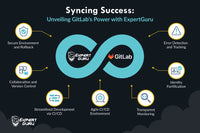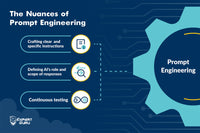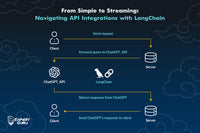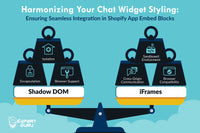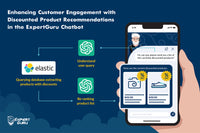Hello there! If you've ever tangled with building or using APIs, you know they're the backbone of our interconnected software world. But not all APIs strut the same stuff. Our tech toolbox has two standout performers—Simple APIs and Streaming APIs—each with its unique flair and function.
Imagine Simple APIs as your straightforward, no-nonsense buddy. You send a request and like a boomerang, your data comes back in one piece. It's ideal when your data needs are clear-cut and your payloads are light.

Simple API response flow
Now, let's turn the spotlight to Streaming APIs. These are the agile sprinters of the API universe. Instead of a single, hefty response, they send data in continuous, digestible chunks. Why is this exciting? Imagine dealing with hefty data payloads or needing real-time updates—this is where Streaming shines, keeping your app dynamic by dribbling data as it becomes available.

Streaming API response flow
Why pick sides? Imagine you're developing an app that involves hefty data processing or requires fresh, real-time data. Using a Simple API could turn your app into a test of patience for users, possibly hanging their session on a single lengthy request—hello, spinning wheel of doom! Conversely, Streaming APIs keep the data flowing and the user experience smooth, even during data-heavy operations.
Choosing the right API style is more than a technical decision—it’s about user satisfaction and application performance.
Understanding Simple APIs and Streaming APIs
Simple APIs: Your Straight Shot to Data
A Simple API is like ordering a coffee at your favorite café—specify what you want, pay up, and get your drink, no frills attached. You make a request, and the API responds with the data in a single, complete response. This mechanism is based on the standard request-response model used by HTTP protocols.
When to Use Them
Quick Data Retrieval is perfect for straightforward tasks where the data size is manageable and the processing time is minimal.
CRUD Operations: Ideal for basic Create, Read, Update, and Delete operations in web applications, where each operation can be completed quickly and in isolation.
Streaming APIs: Keeping the Data Flowing
On the other hand, streaming APIs are like subscribing to a tea-tasting club where new samples are mailed to you throughout the year. Instead of getting all your tea in one overwhelming delivery, you receive it in portions, spread out over time. These APIs send data in chunks as they become available, making them akin to a continuous conversation rather than a single transaction.
How They Work
Continuous Connection: Once a client initiates a request, the server keeps the connection open, sending data in real-time or near-real-time as it's processed or as it becomes available.
Chunks of Data: Data is sent in pieces, which the client can individually process, leading to more dynamic and responsive user experiences.
Benefits
They handle large data volumes. They excel in scenarios where data is too large to send all at once or needs to be delivered as it is generated.
Real-Time Interaction: This is ideal for applications requiring real-time updates, such as live sports scores, stock tickers, or social media feeds.
Scenarios Where They Are Useful
Media Streaming: Delivering video and audio so users can play the media before it's fully downloaded.
Live Event Updates
Updating users about real-time events without requiring them to refresh their browsers or apps.
Challenges
Complexity in Handling: Managing a streaming API can be more complex because it requires keeping connections open and handling data piecemeal.
Resource Intensive: Depending on the implementation, maintaining open connections and managing streaming data can be resource-intensive both on the server and the client side.
Integrating LangChain with Simple and Streaming APIs
In a simple API setup, LangChain can quickly fetch quick responses from conversational models. This approach is ideal for scenarios where the user's query is straightforward and can be answered in one go. For example, a Simple API is your best bet if you're developing a chatbot that provides instant responses to frequently asked questions. Responses are delivered quickly and efficiently without requiring a persistent connection.
LangChain and Streaming API Integration
For applications requiring ongoing dialogue or continuous data updates, integrating LangChain with a Streaming API is more suitable. This setup supports scenarios like live interactions in customer service tools or dynamic updates in applications monitoring data feeds. LangChain can continuously stream responses as the conversation or data evolves, enhancing user engagement by providing immediate and relevant information as the situation changes.
Handling Data Formats in Streaming APIs
Streaming APIs can complicate data management, especially when using JSON. If multiple JSON objects are streamed consecutively without proper separation, issues can result, including parsing errors and potential data loss.

With LangChain adeptly handling both simple and streaming data integrations, the next step is seamlessly integrating this functionality within a modern web framework. FastAPI, known for its performance and ease of use, is an excellent choice. It not only supports asynchronous operations natively but also simplifies the development of both types of API endpoints.

Best Practices, Considerations, and Conclusion
Adhering to best practices is crucial for ensuring robustness and reliability when designing APIs. Key areas to focus on include error handling to gracefully manage unexpected issues, security to protect data integrity and privacy, and performance to provide a smooth user experience. These principles remain paramount whether you’re working with Simple or Streaming APIs.
Choosing between Simple and Streaming APIs should be dictated by your specific application needs and the nature of the data involved. Simple APIs are typically sufficient for straightforward, quick-response interactions. However, for real-time data or large datasets that require ongoing updates, Streaming APIs are more appropriate due to their ability to handle continuous data flows efficiently.
As we wrap up, remember that the right API design can significantly enhance your applications' functionality and user experience. I encourage you to experiment with LangChain and explore both APIs to discover what works best for your specific scenarios. By understanding and leveraging the strengths of each API type, you can build more responsive, efficient, and user-friendly applications. So go ahead, try out these concepts, and see how they can transform your projects!













